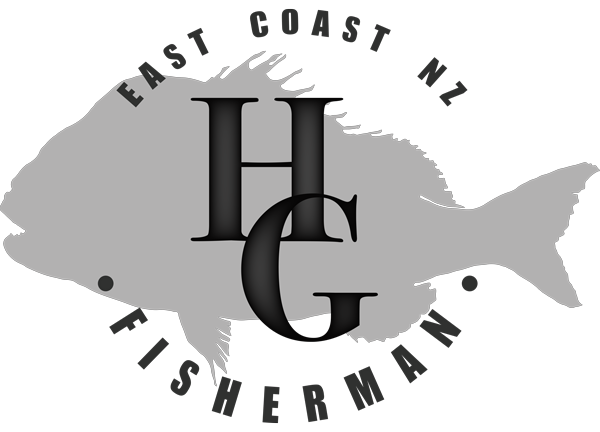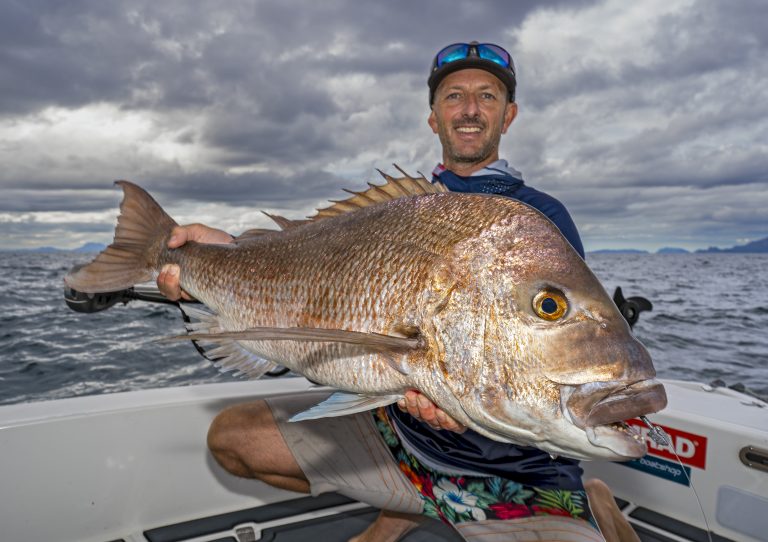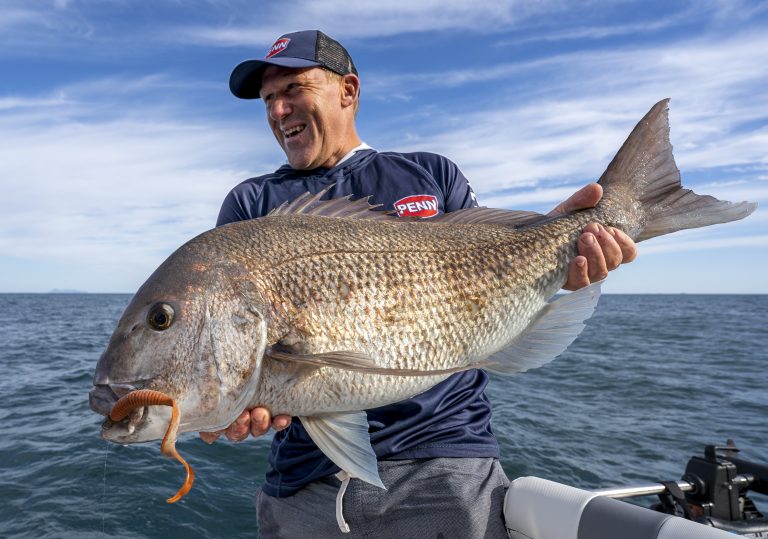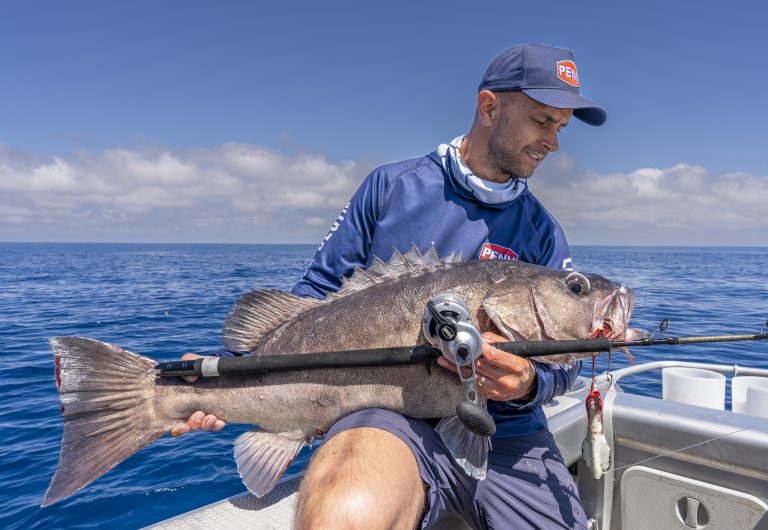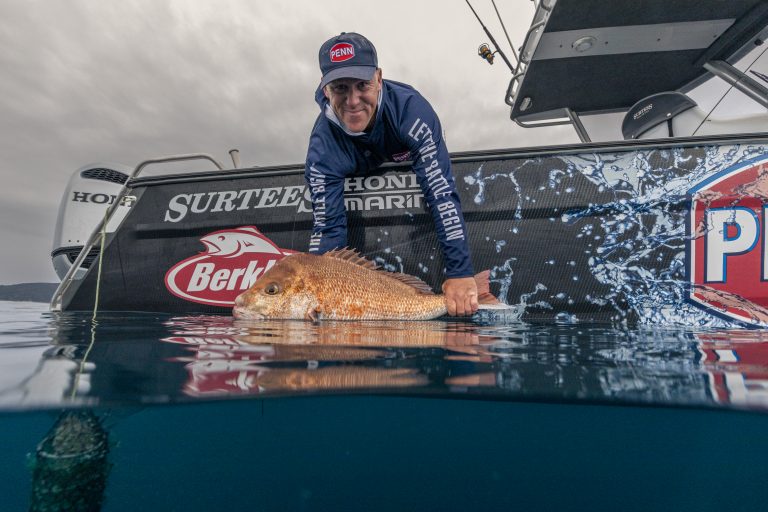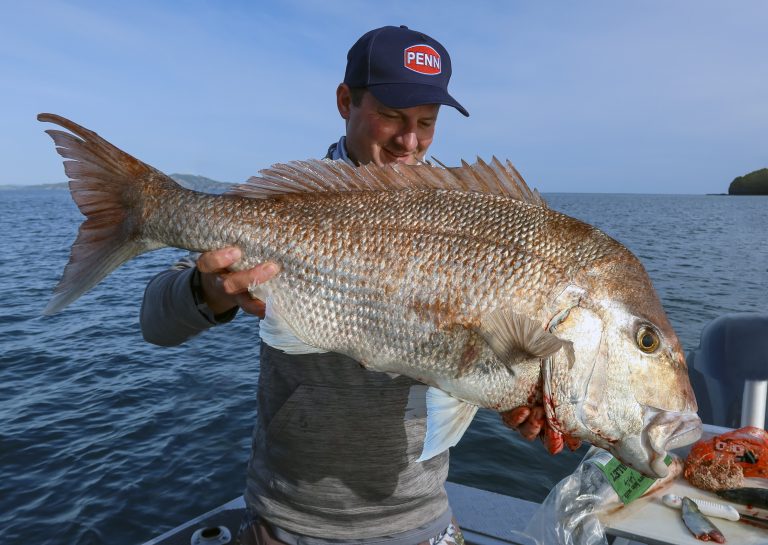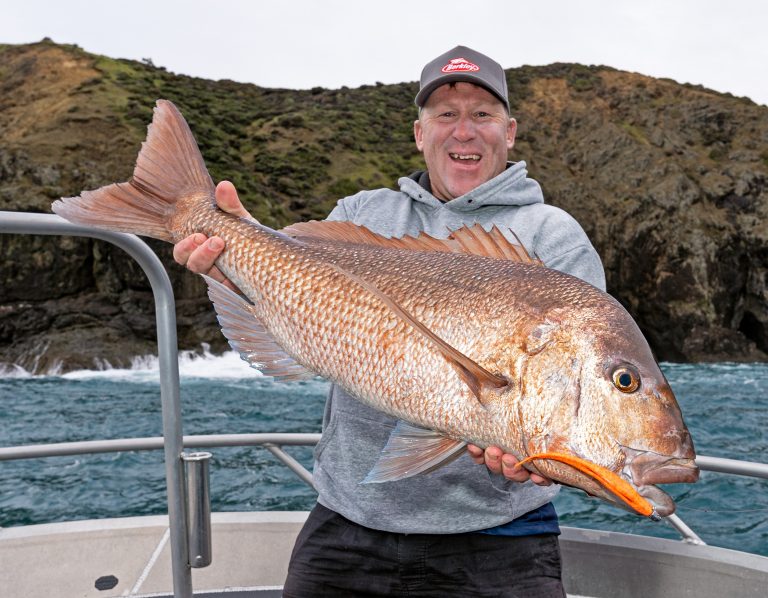With summer now turned to Autumn and the water temperature still warm, we are right in the middle of the best time of year for fishing, with often the most consistent marlin fishing to be found on the upper east coast of the North Island and Swordfish season is at its peak. Large Kingfish also take up residence around known shallow water hotspots and if your chasing trophy snapper, April and May represent the best months to catch that fish of a lifetime.
As you can see, there is quite a lot to get excited about in Autumn. But the reason this writer especially loves this time of year, is for the chance catching big Bluenose and Bass, and not just any big bluenose and Bass, but fish up to and over the magical 50kg mark, although it must be said for Bluenose, 50kg is a recognised peak. I have only personally seen a photo of one such fish, caught on the fabled Garden Patch, an area off the coast off Cape Kari Kari. Although it has had a thrashing both commercially and recreationally, it’s still a reliably excellent fishery. It probably still holds the largest concentration of Bluenose, accessible to trailer boat fisherman in NZ.
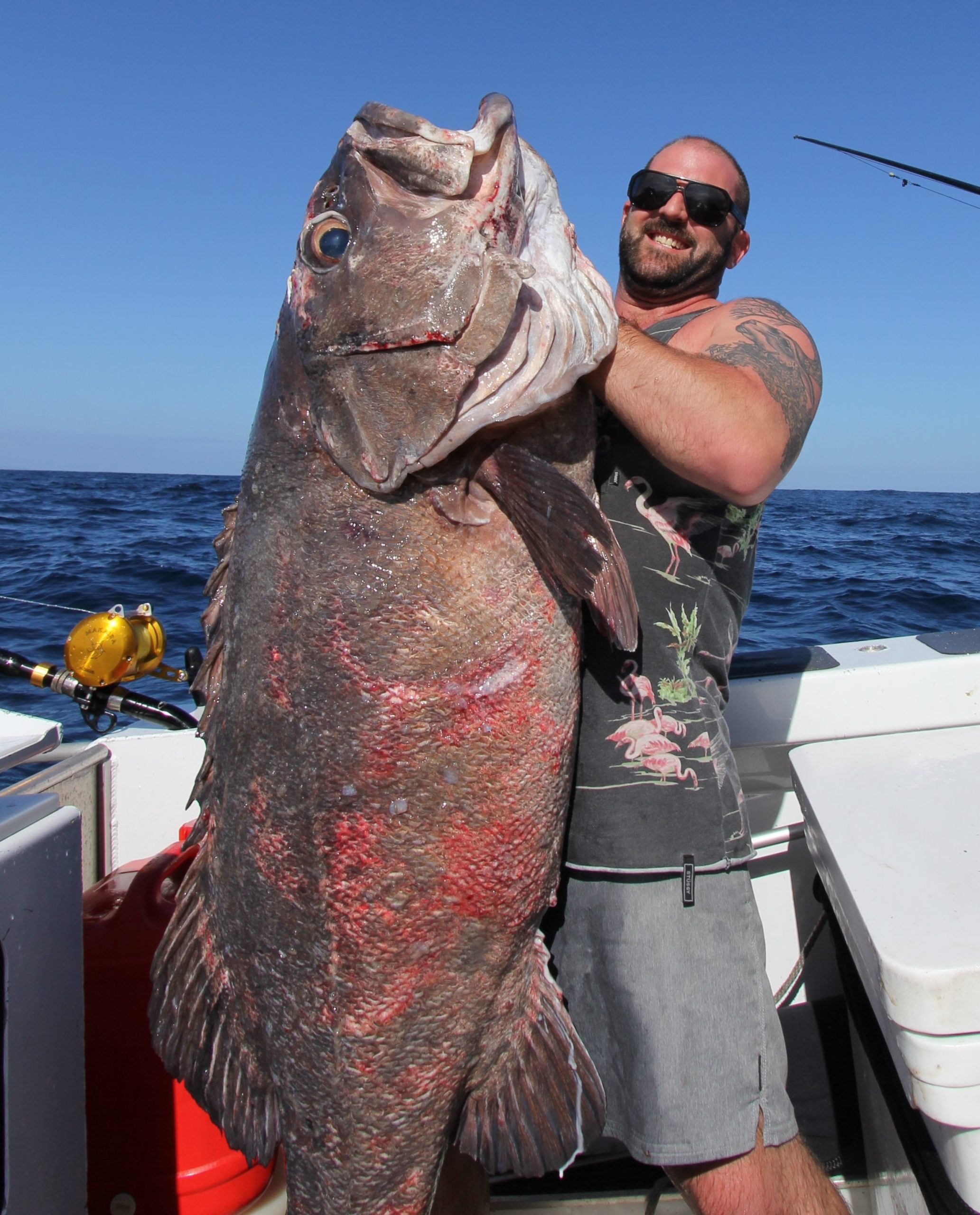
What’s so special about April/May?
Its spawning season, where the large female Bass and Bluenose congregate in much larger numbers to mate with the smaller males to reproduce before the spreading back out onto the mud and various reefs and rocks from where they came.
At this time of year, large Bass can reliably be targeted in shallower waters – 200 meters, but for whatever reason, off the northern coast and towards the Three Kings, Bass can be caught as shallow as 50-80 meters of water! And not always on the foul ground either. Another well-known area for this is the world-famous Ranfurly banks. I also suspect, and although I have never fished there, the North & South Madden banks, a very remote system, some 70 NM south of Napier look like they would hold fish shallow at this time of year as well. One day, given enough time, I intend to explore these grounds and will duly report back with the good oil.
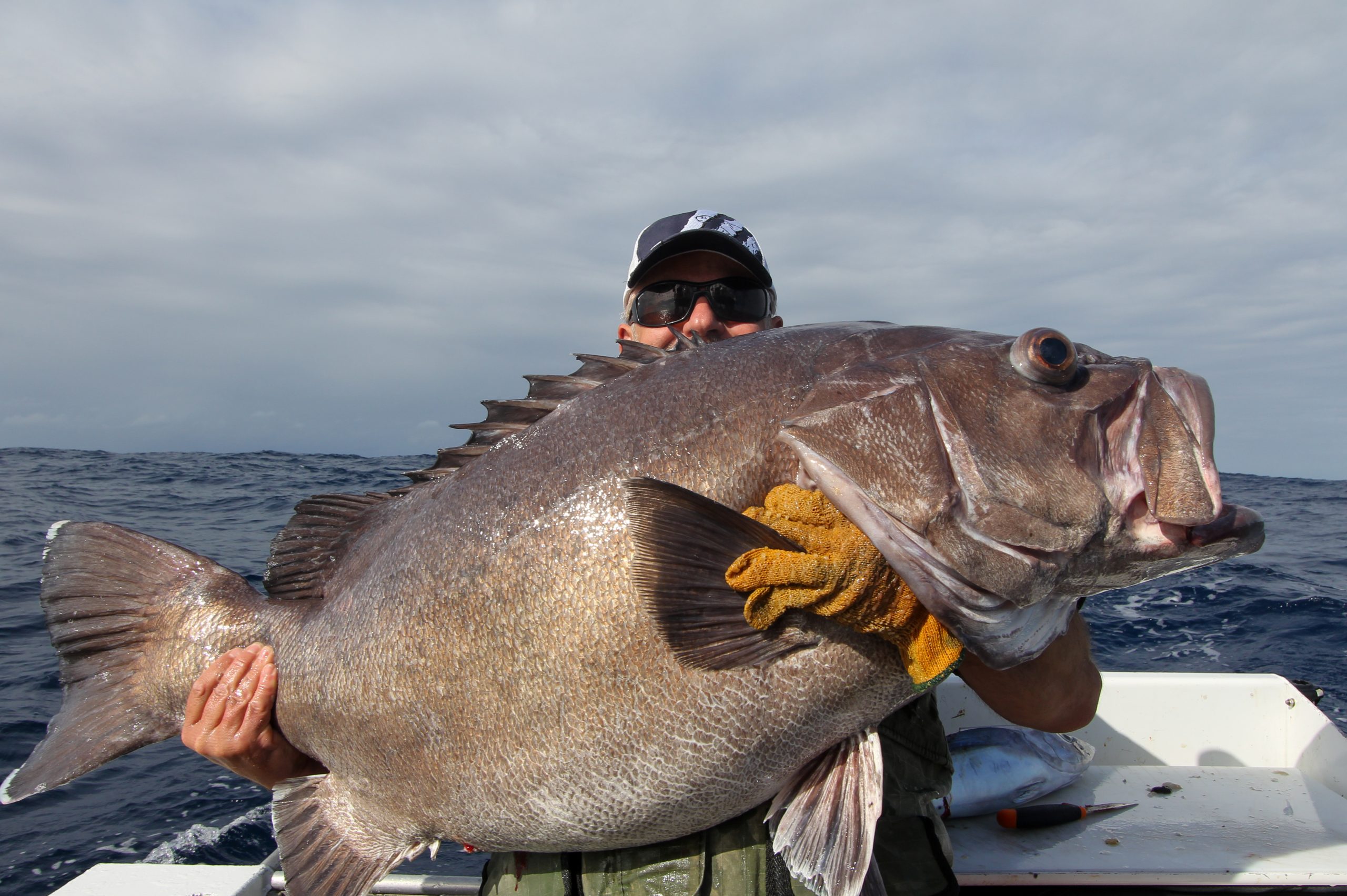
Where you can catch Bluenose, you will also get a bycatch of Bass, if the Bluenose gives them a chance that is. Bluenose can be caught as shallow as 200 meters, but the money depth is 300-350 meters, and typical school fish are 5-15kg. May presents spawning season and for a shortish window of approx. Eight weeks, large cow bluenose come into the reef structures in 300-350 meters on mass, to spawn with the smaller males. The beauty of Bluenose is they usually are in big numbers and are typically easy to catch, although at times can be frustratingly fussy! Expect fish 15-25kg and if you’re lucky you might just put your bait in front of a 30kg behemoth.

Rod and reel wise, I won’t go into too much detail here and what you need is readily available at the local tackle store, but suffice to say, anything from a manual style reel to the latest electric set will catch you fish, some are easier than others! 80lb braid is a minimum and remember big bass and blue nose fight hard! Really hard, with big bass, more akin to a small car, then a fish.
Bait – this is simple, fresh and It does not need to be alive for either of these species, but fresh is the key! If you want big bass, think BIG BAITS, a 1kg fish is nothing for big Bass, and this would routinely be part of its morning tea snack. For bluenose, there is no requirement for big baits, and often a small bait like you might use on snapper flasher, will work better than a large one, in fact, most long liner’s, only use small baits for bluenose. They can be fussy eaters, and if you’re getting back baits with cookie-shaped bit marks (most natural to see on squid), then you are using far too big a bait. Small and fresh baits for Bluenose and large and fresh for Bass. Just remember to hook your bait only once through the recurve or circle hook, and it doesn’t make a lot of difference if you make your dropper rigs, or you buy them off the shelf, they all work just as well as each other. One other point worth mentioning for fishing big baits is make sure you have a big hook and make sure the bait is hooked once through the nose of the bait, so it will not impede a hookup. Another way is to bridle rig your bait, so that has plenty of movement and the hook can easily penetrate the fish’s mouth.
Probably the essential piece of equipment, aside from braid, when fishing in 300 meters, is a flashing diamond lights and a buddy of mine says, no lights, no bites. Any tackle store worth its salt will have these, and if you want to deep drop in 300 meters, this is an essential piece of equipment. One is enough, and it just needs to be hooked onto a 300-pound snap swivel.
Another handy tip for rigging uses a light cable tie to connect your sinker to your ledger rig. This method has saved me a lot of money on rigs and sinkers over the years. With this method, the sinker will break off with necessary pressure once it becomes snagged on the bottom, but it won’t break off by just hitting the reef or drifting over reefs. I have found that using a light 15kg mono break away, will do precisely that, break apart once it hits the reef and using a 24kg mono, is far to difficult to break off once your snagged. Give it a go; you won’t be disappointed!

Where to fish?
You have the boat all set up and your keen as a bean, but unsure where to go? Well, thankfully modern sounders, GPS chart plotters with bathymetric charts make life easy. The best bit of advice I could give you and without posting GPS marks is grab a paper and bathy chart for the same area spread them out on the kitchen table and study the 300-metre mark. Best done with a cold beer. Any noticeable hump or hill in 300-400 metres will hold Bluenose and small Bass and these are always worth checking out, and experience suggests, if you put some time in on the grounds that look fishy, you will catch fish. For me, the areas that I’m interested in are the small, hooks and crooks on the contour lines, as these typically indicate small rises and small rocks and where there are rises and small stones, creates an uplift in current, and this is where the food chain then begins. Anything unusual, on a chart, is worth checking out and all our best fish have come from areas, we have found in this manner. Also, with areas like this, you are potentially fishing somewhere that, has never been fished before. These rocks are becoming increasingly rare, but once you find one, you won’t believe your luck!
